17 Joint-Friendly Workouts That Deliver Serious Results Without the Impact
Protecting your joints doesn't mean accepting slow progress. You can build strength, stamina, balance, and mobility with movements that avoid pounding and jarring forces. The right set of low-impact workouts gives you measurable results while reducing wear and tear on knees, hips, ankles, and shoulders. This expanded list gathers the approaches—water-based cardio, controlled strength work, adaptive HIIT, balance training, and more—so you can mix strategies that match your goals and abilities. Start with a quick five- to ten-minute warm-up that includes gentle range-of-motion drills and light marching or arm swings. That prepares cartilage, muscles, and tendons for movement without stress. For people with arthritis or recent joint procedures, check with a clinician about restrictions before beginning. Use the brief cues and modifications included with each item to scale the challenge. Some workouts in this list deliver steady-state conditioning; others use short intervals to boost cardiovascular fitness while protecting connective tissue. Aim for consistency rather than intensity—two or three sessions a week per modality builds durable strength and resilience over time. If you feel sharp pain, stop and adjust the movement. Gentle soreness after a new challenge is normal; persistent joint pain is not. These options are written so you can find an approachable starting point and progress safely as confidence and capacity grow.
1. Glute Bridges: Build Posterior Strength Without Knee Stress

Glute bridges target the glutes and hamstrings while keeping the knees softly bent and unloaded. Strengthening the posterior chain helps protect the lower back and reduce stress on the knees during everyday tasks like standing and climbing stairs. Start lying on a mat with feet hip-width and knees bent. Press through the heels to lift the hips until your body forms a straight line from shoulders to knees, then lower with control. Work in sets of two to three with ten to fifteen repetitions. Focus on slow, controlled tempo—a three-second lift and a two-second lower—so the muscles, not momentum, do the work. Progress by holding a light dumbbell across the pelvis or moving to single-leg bridges when stability allows. Regress with a smaller range of motion or by practicing glute squeezes while lying down if hip mobility is limited. Watch for a tendency to overarch the lower back; keep the ribcage soft and the core engaged to protect the spine. Regularly doing glute bridges can improve walking mechanics, reduce compensatory knee load, and make daily movement feel easier.
2. Resistance-Band Squat Variations: Safe Strength for the Lower Body
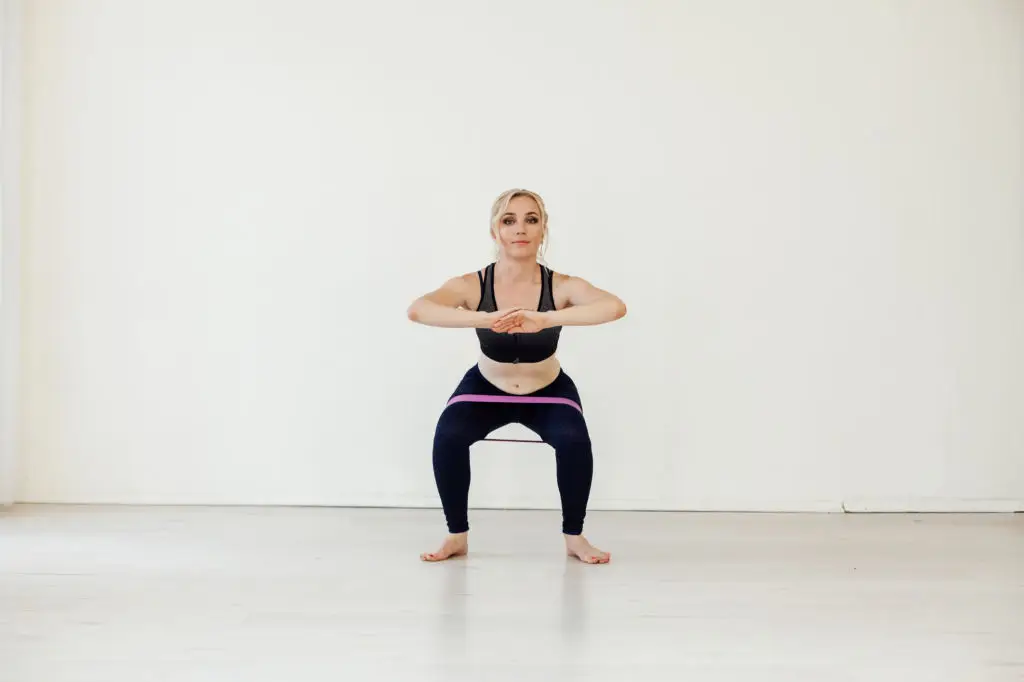
Resistance bands let you build lower-body strength without heavy free weights, which can be kinder to aging joints. Place a loop band above the knees or hold a long band under your feet for added resistance. Practice a hip-dominant squat by sitting back as if lowering into a chair, keeping knees aligned over toes and weight in the heels. Tempo matters: try three seconds down, a one-second pause, and a controlled drive back to standing. Aim for three sets of eight to twelve reps depending on strength goals. If knee pain flares, use a chair to perform box squats so you limit depth and protect the joint. For more challenge, add banded pulses at the bottom or a slow eccentric focus where you lower for five seconds. Banded squats emphasize hip and glute activation, which reduces compensatory strain on the knees. Keep the chest lifted and the spine neutral to avoid placing extra load on the lumbar discs. Bands are inexpensive, portable, and easy to tailor: swap to a heavier band as strength increases.
3. Seated Resistance-Band Rows: Upper-Body Strength With Little Joint Strain

Seated rows done with a resistance band build the upper back and posterior shoulder muscles while minimizing compressive forces at the shoulder joint. Sit tall with legs extended or slightly bent, loop the band around the feet and draw the elbows back with a proud chest. Squeeze between the shoulder blades at the end of each repetition to reinforce postural muscles that support daily posture and breathing. Work in three sets of twelve repetitions with steady tempo and full range, but avoid forcing a range that causes shoulder impingement. If you have limited wrist mobility, use a wider grip or a handle attachment. For added challenge, lean slightly back to increase the demand on the thoracic extensors or perform single-arm rows to address side-to-side asymmetries. Common errors include shrugging the shoulders and letting the lower back round; maintain a neutral spine and soft neck throughout. These seated rows are excellent for people who spend time at desks because they counteract forward rounding and help reduce neck and upper-back discomfort without stressing small joint capsules.
4. Pool Walking and Aqua Aerobics: Cardio With Buoyancy and Resistance

Water-based workouts deliver cardio and strength benefits while offloading body weight, making them ideal for painful knees, hip replacements, or flare-ups of arthritis. Walking across the pool, performing high-knee marches, or using water-resistance equipment offers progressive challenge while protecting joints with buoyancy. A 20- to 40-minute aqua session can be structured as steady-state walking or interval blocks—alternate two minutes of faster walking with one minute of easy movement. Water forces you to control movement through the full range and increases muscular demand without impact. Pay attention to posture: keep the chest open and core engaged so the spine benefits from the support rather than compensating. If pool access is limited, a shallow-water class or home-based water exercises using a noodle can work well. For safety, use non-slip surfaces to exit the pool and consider starting with a physical therapist or certified aquatic instructor if you have balance concerns or are recovering from surgery. People often find water workouts both liberating and empowering because movement feels easier while still challenging the heart and muscles.
5. Swimming Laps: Full-Body Low-Impact Conditioning

Swimming engages large muscle groups across the whole body while eliminating ground impact, which is why it's a go-to for joint-conscious training. Choose strokes that feel comfortable for your shoulders and neck; for many, freestyle and backstroke are manageable choices when technique is controlled. Start with intervals—swim two to four laps at a comfortable pace, rest thirty seconds, and repeat for twelve to twenty minutes. If shoulder discomfort arises, reduce stroke length, focus on a softer pull, or work with a kickboard to emphasize lower-body conditioning while still protecting the shoulders. Swimming also improves breath control and posture through extension and scapular stability. For those new to pools, consider lessons to refine technique; efficient strokes save energy and protect joints by reducing compensatory movement patterns. When lane swimming isn't possible, many people find pool noodle drills or tethered swim training provide similar benefits in smaller spaces. Regular lap swimming can boost cardiovascular fitness and muscular endurance without subjecting joints to repetitive impact.
6. Elliptical Intervals: Low-Impact Cardio That Raises the Heart Rate
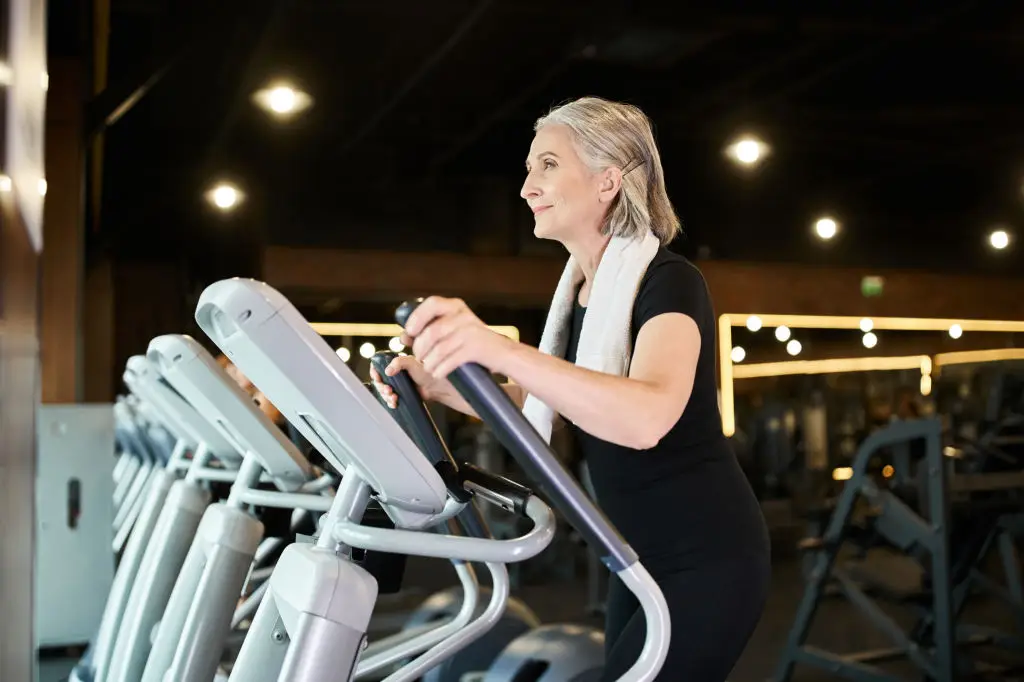
The elliptical provides a smooth, gliding motion that rewards joint-sensitive bodies with elevated heart rate and calorie burn without pounding. Use interval formats to increase fitness efficiently: try 30 seconds of higher resistance or faster cadence followed by 60 seconds at an easier pace, repeated for ten to twenty minutes. Maintain an upright posture and avoid leaning heavily on the handles; let the legs do the work and use the arms for balance and coordinated effort. Adjust stride length and resistance to match comfort—shorter strides can reduce hip strain while slightly higher resistance engages glutes more. If balance is a concern, use the fixed handles and keep a light touch. The elliptical can simulate stair climbing or running mechanics while controlling joint loading, making it a solid option for those rehabbing from minor injuries or simply avoiding impact. Pair elliptical sessions with short bursts of low-resistance strength moves on off days for a balanced program that supports joint health over time.
7. Recumbent Cycling: Seated Endurance and Strength Without Hip or Knee Strain
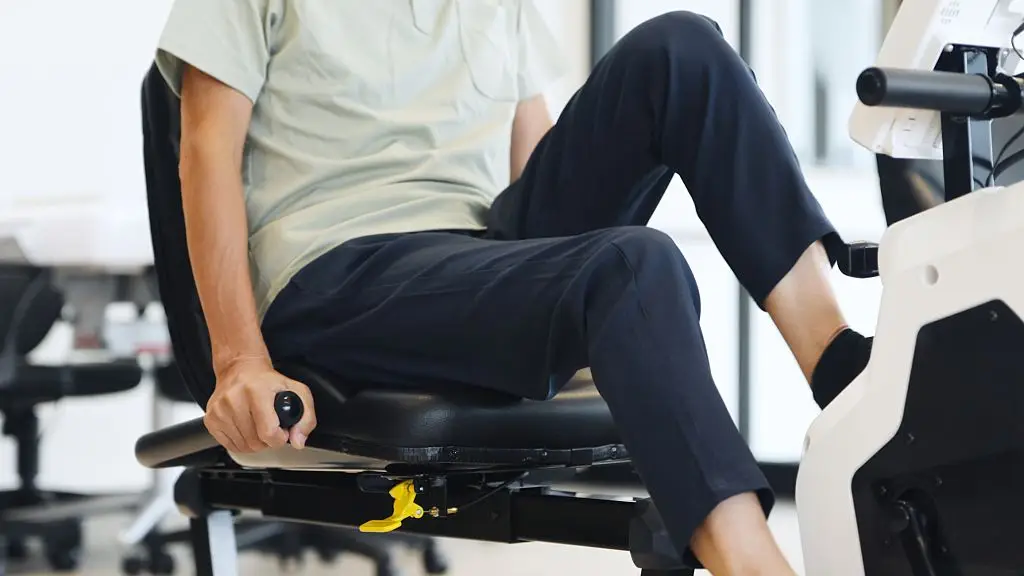
Recumbent bikes let you train cardiovascular fitness from a seated position with more back support and less joint compression than upright cycling. Proper seat positioning matters: set the seat so your knee has a slight bend at full pedal extension to avoid locking the joint. Use steady-state rides for 20 to 30 minutes or try short intervals—one to two minutes of higher resistance followed by two minutes of recovery. Increase resistance gradually as strength improves so the pedal stroke remains smooth. Recumbent cycling is especially useful for people with hip pain or balance limitations because the seat reduces load on the pelvis and lowers the chance of falls. If you want more muscular engagement, add brief cadence sprints or light standing cycling if your condition allows. Combining recumbent sessions with targeted lower-limb strength exercises helps preserve muscle mass and improves functional activities like rising from chairs without adding joint stress.
8. Pilates Mat Work: Core Strength, Mobility, and Joint-Friendly Control
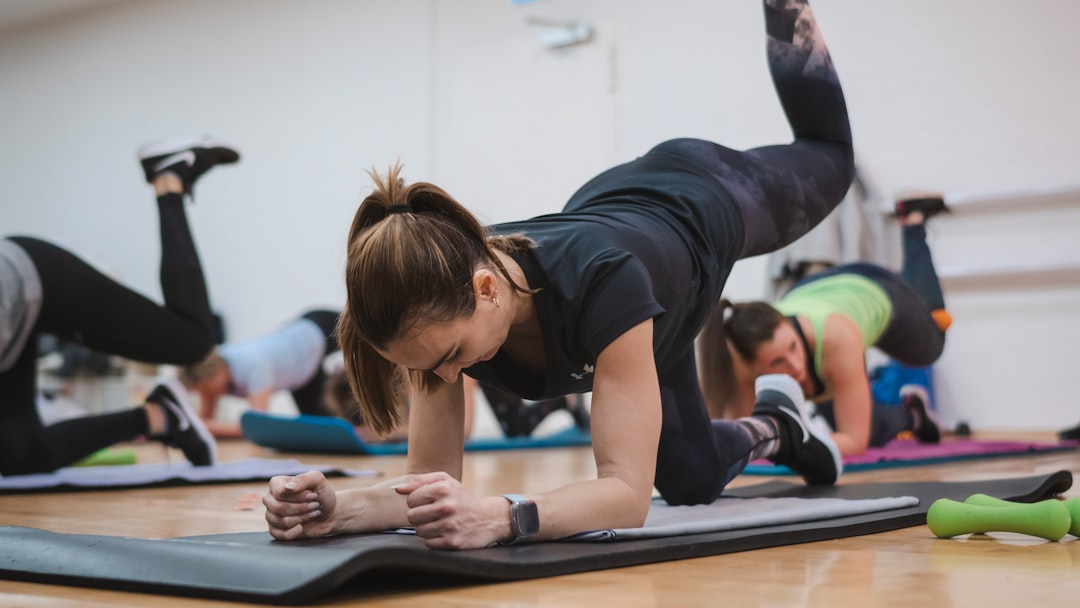
Pilates emphasizes controlled movement, breath, and core engagement—qualities that support joint stability and movement quality. Mat-based Pilates includes exercises such as pelvic curls, leg circles, and modified hundreds that strengthen deep core muscles while enhancing hip and thoracic mobility. Work in focused sets of controlled repetitions, prioritizing quality over quantity. For those with neck sensitivity, keep the head supported or limit neck flexion during abdominal exercises. Add a small Pilates ball or resistance band to introduce gentle resistance without stressing joints. Regular practice helps coordinate the muscular corset around the spine, which reduces compensatory loading on limb joints during daily activities. Pilates also encourages mindful movement patterns that carry over into walking and lifting tasks. Start with beginner flows and progress to intermediate sequences as control and mobility increase; certified instructors can provide modifications that respect past injuries and current limitations.
9. Chair Yoga and Seated Mobility Routines: Flexibility and Stability for Everyday Movement

Chair yoga and seated mobility sessions are practical options for people with limited standing tolerance, balance concerns, or early recovery needs. Sitting stabilizes the base and allows you to open the chest, lengthen the spine, and mobilize hips and shoulders with minimal joint load. Moves like seated cat-cow, gentle spinal twists, and ankle circles improve circulation and range of motion. A typical session runs fifteen to thirty minutes and can be repeated daily to maintain joint comfort and mobility. Incorporate mindful breathing to reduce muscle tension and support relaxation. Encourage small progressions such as lifting one foot briefly to practice single-leg balance while holding the chair back. Chair formats are also accessible in workplace breaks, helping reduce stiffness from prolonged sitting. For people transitioning back to standing practices, chair yoga offers a safe bridge to regain confidence and movement fluency without forcing joints into uncomfortable ranges.
10. Low-Impact HIIT (No Jumps): Short, Effective Intervals Without Impact

High-intensity interval training can be adapted to protect joints by removing jumps and high-impact moves while keeping the cardiovascular challenge. Structure short blocks like 20 to 30 seconds of hard work followed by 30 to 40 seconds of easy recovery, repeating for ten to twenty minutes total. Use low-impact moves such as power marching, step touches with arm drives, band-resisted chops, or stationary mountain climbers from an elevated surface. The goal is to elevate heart rate and maintain quality movement rather than forcing speed at the expense of form. Keep cadence controlled and focus on full range-of-motion in each movement. This style benefits people who want efficient workouts with measurable gains in endurance and metabolic health but who must avoid pounding surfaces. Be mindful of the joints during pivoting or directional changes; favor sagittal-plane movements until balance and strength improve enough to safely include lateral components.
11. Rowing Machine Workouts: Joint-Friendly Full-Body Power and Cardio
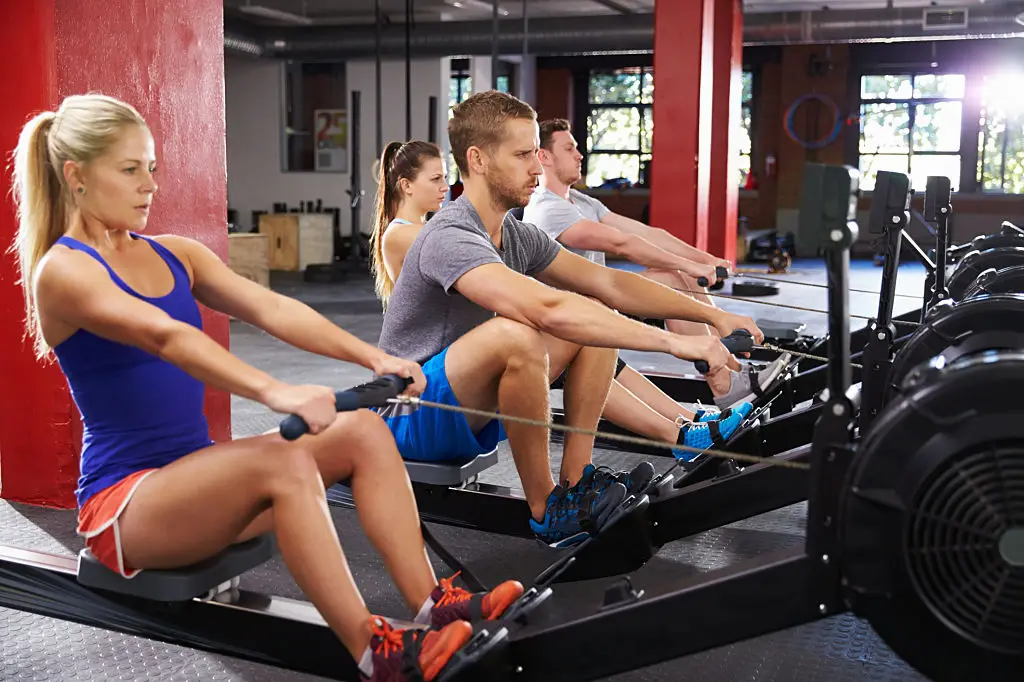
Rowing delivers full-body conditioning with a fluid, low-impact motion that emphasizes the posterior chain and core. The stroke is driven by the legs, transitions through the hips, and finishes with the upper body—this sequence spreads load across larger muscles and away from small joint structures. Focus on technique: a powerful leg drive, clean hip hinge, and controlled arm pull with a smooth recovery. Short interval protocols like 6 x one-minute hard efforts with 90 seconds easy rowing can raise fitness quickly without high joint stress. If you have lower-back sensitivity, shorten the stroke and emphasize leg drive while keeping the range comfortable. For shoulder issues, reduce the catch depth and prioritize scapular control. Rowing also builds muscular endurance that supports daily tasks, and many users find it time-efficient for combining strength and cardio in one session. Use resistance settings that permit good form rather than forcing long, heavy strokes that could compromise posture.
12. Balance and Stability Circuits: Prevent Falls and Improve Functional Strength

Balance work protects joints indirectly by improving control, reducing compensatory movements, and making everyday actions safer. Simple exercises—single-leg stands, tandem walks, heel-to-toe turns, and gentle reach-and-return drills—train the sensors in your feet, ankles, and hips to react with more stability. Start with supported holds near a chair or wall and aim for three sets of twenty to forty seconds per exercise. Progress by reducing support, adding light cognitive tasks like naming colors or counting backward, or moving onto a foam pad to challenge proprioception. Combine balance moves with strength exercises such as single-leg deadlifts to enhance practical transfer to tasks like climbing stairs. Consistent balance training reduces fall risk and eases pressure on vulnerable joints because muscles learn to stabilize efficiently rather than relying on passive structures. Small, regular practice sessions of five to ten minutes can yield noticeable improvements in confidence and functional capacity.
13. Tai Chi: Meditative Strength and Fluid Joint Control
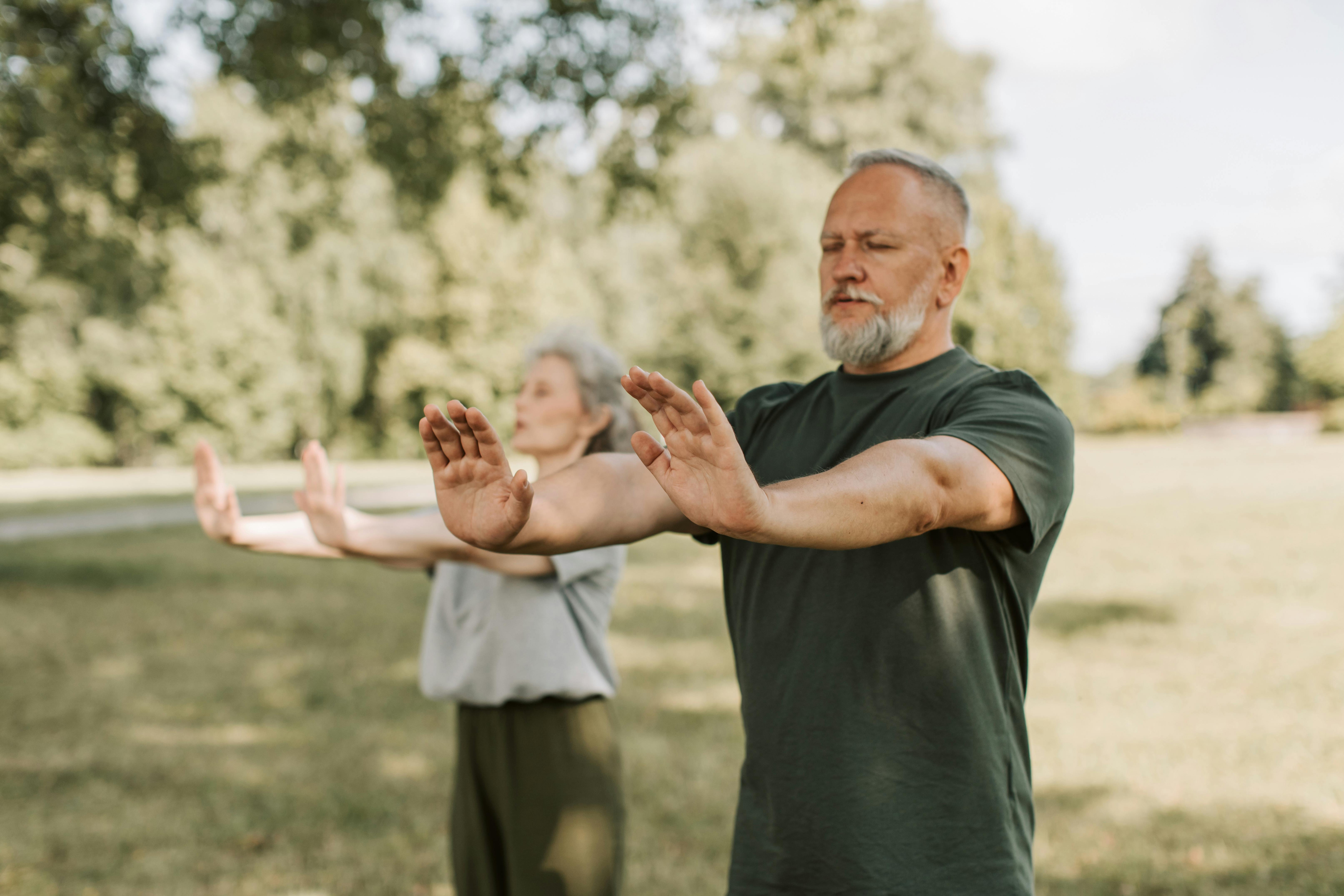
Tai Chi, often called "meditation in motion," is a low-impact practice that utilizes slow, deliberate movements and deep breathing to improve joint health. It is particularly effective for those with osteoarthritis, as the continuous, flowing motions lubricate the joints without the stress of sudden impact. Research suggests that the weight-shifting involved in Tai Chi strengthens the small stabilizing muscles around the ankles, knees, and hips, providing a natural "brace" for the skeleton. Focus on maintaining a soft bend in the knees and a long, relaxed spine. Start with 10–15 minutes of basic forms like "Wave Hands Like Clouds." This practice not only enhances physical balance but also reduces the muscular tension that often exacerbates joint stiffness.
14. Seated Shadow Boxing: High-Intensity Cardio for the Upper Body

Shadow boxing from a seated position is a unique way to achieve a high-intensity cardiovascular workout while completely offloading the lower-body joints. By sitting on a sturdy chair or exercise ball, you can focus entirely on rapid arm movements—jabs, crosses, and hooks—to elevate your heart rate. This "air punching" engages the core, shoulders, and back muscles, improving upper-body power and coordination. Try three-minute "rounds" of continuous punching followed by one minute of rest. To protect the joints, never fully "lock out" your elbows at the end of a punch; keep a slight, soft bend. This modality is excellent for those recovering from foot or knee surgeries who still want to maintain peak aerobic fitness.
15. The "Monster Walk" with Lateral Band Resistance
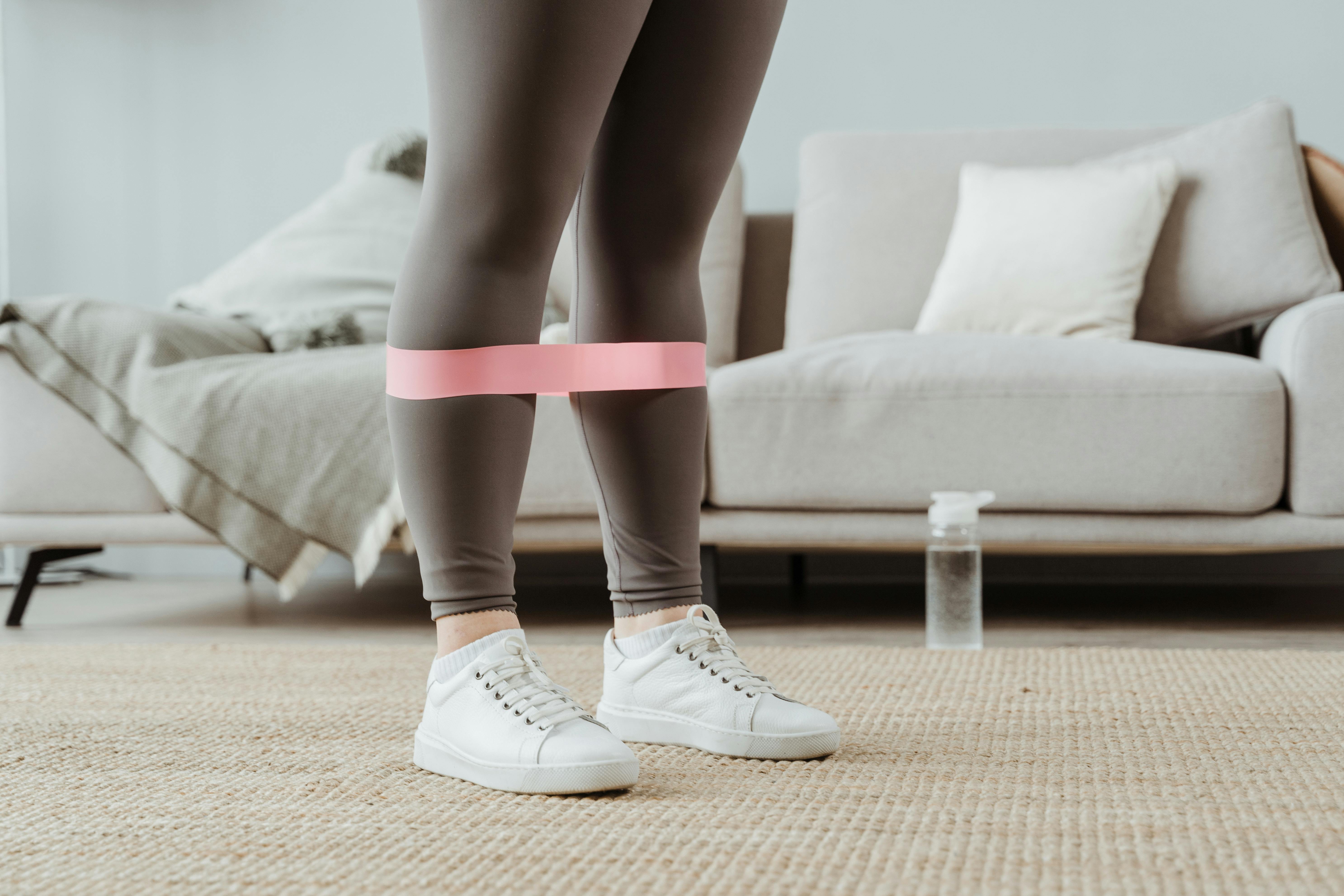
While standard walking is linear, the "Monster Walk" focuses on lateral (side-to-side) hip stability, which is crucial for protecting the knees from caving inward. Place a resistance band around your ankles or just above your knees. Assume a slight mini-squat position and take slow, wide steps diagonally forward or directly to the side, maintaining tension on the band at all times. This move specifically targets the gluteus medius, a key stabilizer of the pelvis. Strengthening this muscle reduces the "shearing" forces on the knee joint during daily activities. Aim for two sets of 15 steps in each direction. If your balance feels unsteady, perform this next to a long hallway wall for light fingertip support.
16. Suspension Training (TRX): Gravity-Assisted Stability

Suspension trainers, like the TRX system, allow you to use your body weight as resistance while providing a constant handle for stability. This is exceptionally joint-friendly because you can easily adjust the angle of your body to decrease or increase the load. For example, a TRX-assisted squat allows you to use your arms to "pull" yourself up, taking the pressure off sensitive knees. Suspension training also forces the core to engage constantly to maintain balance, which protects the spine. Focus on slow, rhythmic movements, such as the assisted lunge or mid-row. It is an ideal bridge for those transitioning from physical therapy back into traditional strength training, as it offers a "safety net" for every movement.
17. Isometric Wall Sits: Building Quad Strength Without Movement

Isometric exercises involve contracting a muscle without changing its length, which is a "gold standard" for strengthening joints that are too painful for repetitive bending. The wall sit is a classic example: lean your back against a flat wall and slide down until your knees are at a comfortable, shallow angle (start at 30 or 45 degrees). Hold this position for 20–40 seconds, focusing on pressing your lower back into the wall. Because there is no friction or movement in the knee joint itself, you can build significant strength in the quadriceps and glutes without irritation. Repeat three to five times. This "static" strength is what helps you stay stable while standing in line or walking on uneven surfaces.
Wrap-Up: Combine, Progress, and Protect Your Joints While Getting Real Results

These twelve joint-friendly workouts offer a toolbox you can mix and match based on goals, access, and how your body responds. Start with the mode that feels most comfortable and add variety to avoid plateaus: pair two strength-focused sessions with one aquatic or cardio session each week, then sprinkle in balance and mobility work on alternate days. Progress by small increments—more reps, slightly higher resistance, or a few extra minutes—so connective tissues adapt without sudden overload. Warm up for five to ten minutes before harder sessions and cool down with gentle mobility afterward; this simple habit supports recovery and long-term joint health. Pay attention to how your body signals the difference between productive muscle soreness and joint irritation; when in doubt, back off or swap to a different modality. If you live with a chronic condition or had recent surgery, consult your healthcare provider or physical therapist to tailor these workouts safely. Consistency matters most: steady, joint-friendly training builds durable strength, improves movement quality, and helps you stay active with less pain. Keep curiosity and kindness in the process—small, steady steps lead to lasting results.